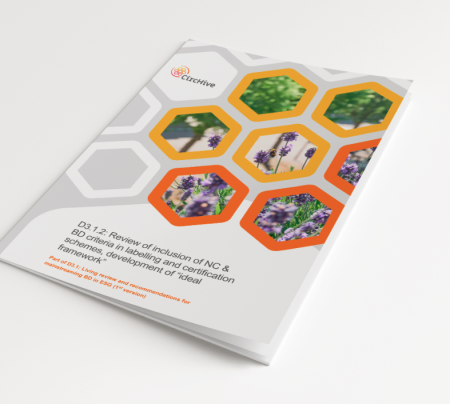
Resource description:
This report focuses on voluntary standards and makes a review of their criteria with regards to biodiversity.
There are thousands of voluntary standards addressing almost every type of consumer product on the market. These voluntary standards are considered industry best practices or “industry consensus” standards. They can be operated by public or private agencies at the national, regional or international level. Voluntary standards are becoming binding standards if they are the subject of contracts between parties or if compliance with them is mandatory by law. ISO 14024:2018 establishes the principles and procedures for developing so called “Type I environmental labelling programmes”, including the selection of product categories, product environmental criteria and product function characteristics, and for assessing and demonstrating compliance. ISO 14024:2018 also establishes the certification procedures for awarding the label, e.g. third-party certification. A certification with an ISO Type 1 standard is often a prerequisite for selling the product on the B2B market.
For the food sector, there are more than 400 different standards and labels with relevance for the European market. There are regional, national, European, and international standards organized by public and private standard organisations. Most of them are quality standards, others are focusing on the denomination of the origin, type of production or certain sustainability aspects. Examples for B2B standards are the QSStandard for various agricultural products or the 4C Coffee Standard. Well known examples of standards directed to the final consumer are the EU Ecolabel for Organic Products, the Rainforest Alliance Frog, MSC or Fairtrade.
In order to analyze how biodiversity is addressed by standards within the CircHive project, 21 standards have been screened for the sectors food, textile and wooden products (see Annex 1: List of standards screened). The matrix elaborated for the screening covers the most relevant aspects related to biodiversity and clustered according to the drivers of loss of biodiversity.
The matrix considers on the one hand the policy or strategy of the standard organisation and on the other hand the criteria which the producer needs to comply with to get and keep the certificate. See Annex 2: Screening Matrix.
Author/Contact:
- Marion Hammerl (LCF)
- Katrin Tomova (Denkstatt)
- Ivan Paspaldzhiev (Denkstatt)
- Annekathrin Vogel (LCF)